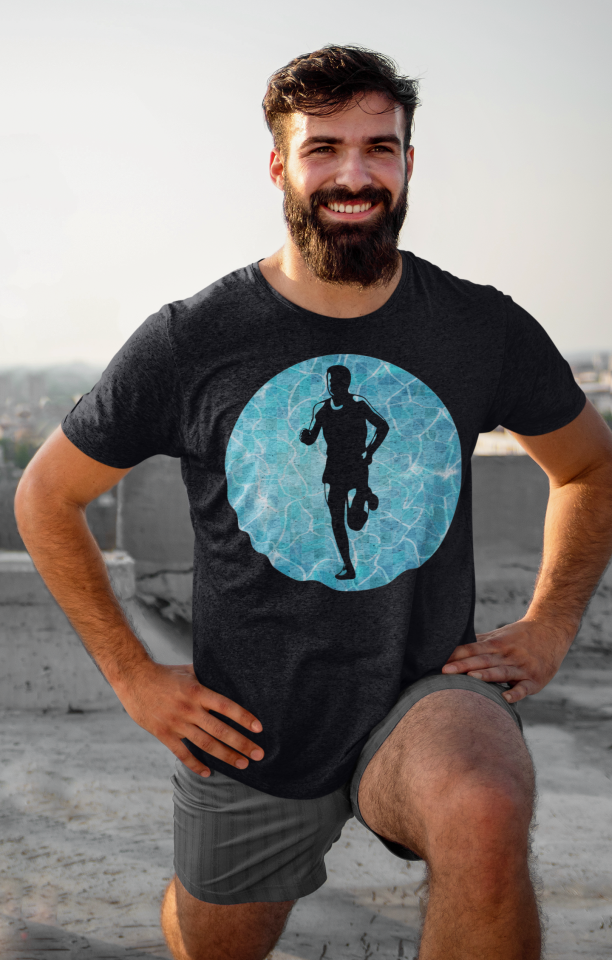#Cardiovascular workout
Photo






Aqua Jogging T-Shirts
Whether you're a beginner or an experienced athlete, the Aqua Jogging T-Shirts Collection is the perfect choice for anyone looking to enhance their aquatic workouts.
#aqua jogging#water running#low-impact exercise#aquatic fitness#cardiovascular workout#resistance training#rehabilitation exercise#pool workout#deep water exercise#hydrotherapy
2 notes
·
View notes
Text
#Exercise bikes#Home gym equipment#Affordable fitness#Cardiovascular workout#Calorie burning#Lower body strengthening#Budget-friendly exercise bikes#Exercise bike reviews#Fitness equipment#Indoor cycling#Weight loss#Home workout#Exercise bike benefits#Choosing the right exercise bike#Exercise bike maintenance#Exercise bike comparison#Fitness tips#Home fitness solutions
0 notes
Text








After a lazy day yesterday, I'm back on it this morning.
A good combination of resistance and cardio for my lower body to start my day.
Then the part of my day that I always look forward to - coffee and peanuts as the sun rises.
An hour later, it was out in that wonderful natural light for a muddy, but excellent walk.
Made more excellent with a lovely coffee break towards the end!
#fitspo#fitspiration#fitblr#fitness#healthy living#health and fitness#fit#workout#fiton#suzieb-fit#walking#cardiovascular health#circadian rhythm#natural sunlight#lower body training#lower body exercises#resistance training#caffeine junkie
16 notes
·
View notes
Text
"Achieve Your Weight Loss Goals with the Keto Diet"
"Unlock Your Weight Loss Potential with the Power of the Keto Diet"

Introduction
The keto diet has gained popularity as a fast and effective way to lose weight. By reducing carbohydrates and increasing fat intake, the body enters a state of ketosis, where it burns fat for energy. If you're seeking rapid weight loss, the keto diet can be a valuable tool. In this blog post, we'll explore how to get started with the keto diet and provide tips for staying on track to maximize your weight loss.
What is the Keto Diet?

The keto diet, short for ketogenic diet, is an eating plan that emphasizes high-fat and low-carbohydrate intake to induce ketosis. Ketosis is a metabolic state in which the body uses stored fat as its primary source of energy instead of glucose derived from carbs. This transition leads to efficient weight loss and potential additional benefits such as improved mental clarity and reduced inflammation. It is crucial to follow a comprehensive keto guide to ensure you consume the right balance of fats, proteins, and carbohydrates to achieve and maintain ketosis. With its increasing popularity, the keto diet has become a go-to option for individuals aiming to lose weight quickly and effectively.
How Does the Keto Diet Aid Weight Loss?
The keto diet facilitates rapid and efficient weight loss through its high-fat, low-carb approach. By reducing carbohydrate intake, the body is forced to utilize stored fat for energy, resulting in ketosis. During ketosis, fat molecules are broken down into ketones, which provide energy for the body. This metabolic process enhances fat burning and promotes weight loss. Furthermore, the keto diet helps regulate blood sugar levels and suppresses appetite. By consuming more healthy fats and fewer carbs, you feel fuller for longer periods and avoid cravings that can lead to overeating. It is essential to note that not all fats are equal. While the keto diet emphasizes healthy fats, it is crucial to monitor your macronutrient intake and overall calorie consumption to prevent excessive calorie intake. To optimize weight loss on the keto diet, follow a comprehensive keto guide that offers guidance on food choices and macronutrient tracking. By adopting the right approach, you can achieve fast and effective weight loss on the keto diet.
The Importance of Tracking Macros on the Keto Diet.
Tracking macros, which involves monitoring carbohydrate, protein, and fat intake, is key to achieving rapid weight loss on the keto diet. Macro tracking ensures that you consume the appropriate types and quantities of food to maintain a state of ketosis, where fat is burned for energy instead of carbs. Utilizing a reliable keto guide can greatly assist in tracking macros by providing the correct macronutrient ratios and portion sizes tailored to your individual needs and weight loss goals. By adhering to this guide, you can ensure you are on the right path to achieving your weight loss objectives safely and healthily. Additionally, it is important to monitor your daily calorie intake. While the keto diet emphasizes high-fat foods, it is still crucial to consume the appropriate number of calories based on your body type and activity level. Consuming excess calories, even from healthy fats, can lead to weight gain. Overall, tracking your macros and calorie intake on the keto diet is vital for achieving rapid weight loss. By staying mindful of your food intake, you can ensure you consume the right types and quantities of food to maintain ketosis and achieve your weight loss goals.
Top Foods for Quick Weight Loss on the Keto Diet.

One of the most enticing aspects of the keto diet is the ability to enjoy delicious foods while still losing weight. Here are some of the best foods to incorporate into your keto diet for quick results:
Avocado: This versatile fruit is packed with healthy fats, keeping you satiated and adding creaminess to your meals without relying on dairy.
Meat and poultry: High-protein options like chicken, turkey, and beef are staples of the keto diet. They are satisfying, flavorful, and promote muscle growth during weight loss.
Nuts and seeds: Whether you prefer almonds, walnuts, or pumpkin seeds, these provide healthy fats and protein, making them excellent choices for the keto diet.
Leafy greens: Low in carbs and rich in vitamins and minerals, vegetables like kale and spinach add bulk to your meals without contributing excessive calories.
Coconut oil: With its high concentration of medium-chain triglycerides (MCTs), coconut oil is a popular ingredient in keto recipes. MCTs can enhance fat burning.
Eggs: A superb source of protein and healthy fats, eggs are versatile and can be prepared in countless ways.
Cheese: Cheese is keto-friendly and adds flavor to your meals. However, be mindful of portion sizes, as it can be high in calories and fat.
To achieve your weight loss goals on the keto diet, prioritize whole, nutrient-dense foods that nourish your body and keep you satisfied. By incorporating these foods into your diet, you will be well on your way to rapid weight loss.
Sample Meal Plan for Quick Weight Loss on the Keto Diet
Following a well-structured meal plan can help you stay on track with the keto diet and achieve your weight loss goals quickly. Here's a 3-day sample meal plan to facilitate rapid weight loss:
Day 1:
Breakfast: Avocado and egg salad
Snack: Greek yogurt with mixed nuts
Lunch: Grilled chicken with roasted broccoli
Snack: Cheese and olives
Dinner: Baked salmon with roasted Brussels sprouts
Day 2:
Breakfast: Scrambled eggs with bacon and spinach
Snack: Almond butter with celery sticks
Lunch: Cauliflower fried rice with shrimp
Snack: Keto protein bar
Dinner: Beef and vegetable stir-fry
Day 3:
Breakfast: Coconut milk chia pudding with raspberries
Snack: Hard-boiled egg with celery sticks
Lunch: Tuna salad lettuce wraps
Snack: Homemade kale chips
Dinner: Grilled lamb chops with cauliflower mash
Remember to stay hydrated throughout the day by drinking plenty of water and herbal tea to support your weight loss efforts.
By adhering to this meal plan and avoiding high-carb foods, you can achieve rapid results on the keto diet. However, keep in mind that individual bodies vary, and it is essential to consult a healthcare professional before starting any new diet.
Tips for Successful Adherence to the Keto Diet for Fast Results
Meal prep: Planning and preparing your meals and snacks in advance can greatly facilitate adherence to the keto diet. By having healthy, keto-friendly options readily available, you can stay organized and make smart choices.
Find keto-friendly substitutions: Identify keto-friendly substitutes for your favorite non-keto foods. For example, replace traditional pasta with zucchini noodles or spaghetti squash, and use keto-friendly sweeteners like stevia or erythritol instead of sugar.
Stay hydrated: Drinking an adequate amount of water is crucial on the keto diet. It aids in flushing out toxins and keeps you feeling full. Aim for at least 8 glasses of water per day and consider adding electrolytes as needed.
Keep healthy snacks on hand: Having convenient, healthy snacks available can help prevent reaching for high-carb options like chips or cookies. Consider nuts, seeds, cheese, or veggies with dip as satisfying and keto-friendly choices.
Seek support: Finding support from others following the keto diet can be highly beneficial. Joining online communities or involving a friend or family member in your journey can help maintain motivation and accountability.
By following these tips, you can maximize your success on the keto diet and achieve fast results. Remember to be patient, consistent, and attentive to your body's signals. Happy keto-ing!
Potential Pitfalls to Avoid on the Keto Diet
While the keto diet is effective for weight loss, it's essential to be aware of potential pitfalls and work to avoid them. Here are a few common pitfalls to watch out for:
Inadequate water intake: The keto diet can increase urine production, leading to dehydration. Ensure you drink enough water throughout the day to keep your body hydrated and functioning properly.
Excessive consumption of processed foods: Packaged keto snacks and processed meats often contain high amounts of sodium, preservatives, and artificial ingredients. Focus on whole, nutrient-dense foods rather than relying heavily on processed options.
Overconsumption of protein: Although the keto diet is often associated with high protein intake, excessive protein consumption can hinder ketosis and slow down weight loss. Track your macros to maintain the proper balance of protein, fat, and carbs.
Inadequate fiber intake: Fiber is crucial for digestive health and helps you feel full after meals. Include fiber-rich foods such as leafy greens, nuts, seeds, and low-carb fruits in your diet.
Impatience: While some individuals experience rapid weight loss on the keto diet, everyone's body responds differently. Be patient and give your body time to adapt to the new eating pattern. Consistency is key, and results will come with time.
By being mindful of these potential pitfalls and taking proactive steps to avoid them, you can set yourself up for success on the keto diet and achieve your weight loss goals quickly and effectively.
Download our free 21 Keto Recipe Cook Book
#Exercise benefits for health#Healthy lifestyle tips#Physical fitness benefits#Effective exercise routines#Health and wellness advice#Practical fitness tips#Exercise motivation techniques#Setting fitness goals#Active living benefits#Exercise for weight loss tips#Cardiovascular health improvement#Strength training benefits#Exercise and mental health connection#Beginner-friendly fitness tips#Effective exercise at home#Efficient workout routines#Exercise for stress reduction#Exercise for longevity and health#Fitness inspiration for success#Exercise as self-care for well-being
2 notes
·
View notes
Text
Walk Your Way to a Healthy Heart: Exploring the Impact of Walking on Cardiovascular Health

Introduction
Cardiovascular diseases continue to be a leading cause of morbidity and mortality worldwide. Fortunately, adopting a physically active lifestyle can significantly reduce the risk of cardiovascular problems. Among various forms of exercise, walking is a simple, accessible, and low-impact activity that offers numerous benefits for cardiovascular health. In this article, we will delve into the scientific evidence supporting the positive impact of walking on cardiovascular health.
Enhances Heart Health
Regular walking serves as a powerful tool to improve heart health. It strengthens the heart muscle, enhances its pumping efficiency, and promotes better circulation. Walking increases the heart rate, leading to improved blood flow and oxygen delivery throughout the body. Over time, this can reduce the risk of developing conditions such as coronary artery disease, heart attacks, and stroke.
Lowers Blood Pressure
Hypertension, or high blood pressure, is a major risk factor for cardiovascular disease. Walking has been shown to effectively lower blood pressure levels. By engaging in regular walking sessions, individuals can reduce both systolic and diastolic blood pressure. This reduction helps to alleviate strain on the heart, minimize the workload on blood vessels, and decrease the risk of heart-related complications.
Reduces Cholesterol Levels

High cholesterol levels, specifically LDL cholesterol ("bad" cholesterol), contribute to the buildup of plaque in the arteries, leading to atherosclerosis and increasing the risk of heart disease. Walking has been found to elevate HDL cholesterol ("good" cholesterol) and lower LDL cholesterol, thus promoting a healthier lipid profile. By incorporating walking into a daily routine, individuals can positively impact their cholesterol levels and reduce the risk of cardiovascular problems.
Aids in Weight Management
Obesity and excess body weight are known risk factors for cardiovascular disease. Walking can play a crucial role in weight management and maintenance. It helps burn calories, improves metabolism, and contributes to overall energy balance. By incorporating regular walking into a balanced lifestyle, individuals can achieve weight loss or maintain a healthy weight, reducing the strain on the cardiovascular system.
Enhances Blood Sugar Control
Maintaining optimal blood sugar levels is vital for cardiovascular health, especially for individuals with diabetes or prediabetes. Walking after meals has been shown to improve glucose control and insulin sensitivity. It aids in the efficient uptake of glucose by muscles, lowering blood sugar levels and reducing the risk of complications associated with diabetes.
Improves Mental Well-being
In addition to its physical benefits, walking also positively impacts mental well-being, which indirectly contributes to cardiovascular health. Walking releases endorphins, known as "feel-good" hormones, reducing stress, anxiety, and depression. These psychological benefits of walking can help lower blood pressure and reduce the risk of stress-related cardiovascular problems.
Improves Vascular Function

Walking has a positive impact on vascular health by promoting vasodilation and improving the function of blood vessels. Regular walking helps to maintain the flexibility and elasticity of arteries, reducing the risk of arterial stiffness and hypertension. Improved vascular function facilitates better blood flow and nutrient delivery to organs and tissues, contributing to overall cardiovascular health.
Enhances Cardiorespiratory Fitness
Cardiorespiratory fitness, which refers to the ability of the heart, lungs, and muscles to work efficiently during physical activity, is a key indicator of cardiovascular health. Walking regularly improves aerobic capacity, increasing the efficiency of the cardiovascular system. As a result, the heart can pump more blood with less effort, and the body becomes more efficient at utilizing oxygen. This improvement in cardiorespiratory fitness reduces the risk of cardiovascular diseases and improves overall endurance.
Reduces Inflammation
Chronic inflammation plays a significant role in the development and progression of cardiovascular diseases. Studies have shown that regular physical activity, including walking, can reduce inflammation markers in the body. Walking helps to modulate the production of inflammatory molecules, promoting a healthier inflammatory response and reducing the risk of atherosclerosis and heart disease.
Manages Stress Levels
Stress has been linked to an increased risk of cardiovascular problems. Walking serves as a natural stress-reliever, promoting relaxation and improving mental well-being. Engaging in regular walks can help reduce cortisol levels (the stress hormone) and promote a sense of calm. By managing stress levels, walking indirectly supports cardiovascular health and reduces the risk of stress-related conditions.
Increases Longevity

Walking has been associated with increased longevity and a reduced risk of premature death from cardiovascular causes. Engaging in moderate-intensity walking for at least 150 minutes per week has been found to have significant health benefits. By adding years to your life, walking contributes to a higher quality of life and allows for more active and fulfilling years with a healthy heart.
Enhances Sleep Quality
Good sleep is essential for overall health, including cardiovascular health. Walking has been shown to improve sleep quality, helping individuals achieve deeper and more restorative sleep. Regular physical activity, such as walking, can regulate sleep patterns, reduce insomnia symptoms, and enhance sleep duration. By promoting better sleep, walking indirectly supports cardiovascular health by allowing the body to rest and recover effectively.
Boosts Immune Function
A strong immune system is crucial for protecting the body against infections and diseases, including those that can affect the cardiovascular system. Walking has been linked to improved immune function, reducing the risk of respiratory infections, inflammation, and other immune-related disorders. By enhancing immune function, walking contributes to overall cardiovascular health and lowers the chances of developing related complications.
Encourages Social Engagement
Walking can be a social activity, providing an opportunity to engage with friends, family, or walking groups. Social connections have a positive impact on mental health and well-being, reducing stress levels and enhancing overall happiness. Walking with others not only makes the activity more enjoyable but also provides a support network for maintaining a regular exercise routine. The social aspect of walking can contribute to better cardiovascular health through improved emotional and mental well-being.
Sustainable and Cost-Effective
One of the remarkable advantages of walking is its sustainability and cost-effectiveness. Walking requires no special equipment or gym membership fees, making it accessible to almost everyone. It can be incorporated into daily routines, such as walking to work, taking the stairs instead of the elevator, or going for a stroll during lunch breaks. The simplicity and affordability of walking make it a long-term exercise solution for maintaining cardiovascular health without financial or logistical barriers.
Customizability and Adaptability

Walking offers great flexibility in terms of duration, intensity, and terrain. Whether you have a short window of time or a longer period available, you can adjust your walking routine accordingly. Additionally, walking can be tailored to different fitness levels, allowing individuals to start at a comfortable pace and gradually increase intensity and distance. The ability to customize and adapt walking makes it an inclusive exercise option for people of all ages, fitness levels, and physical abilities.
Low-Risk Activity
Compared to many other forms of exercise, walking carries a low risk of injury. It is a low-impact activity that puts minimal stress on joints and muscles, making it suitable for individuals with conditions such as arthritis or those recovering from injuries. The low risk of injury associated with walking allows for consistent and sustainable exercise participation, ensuring long-term cardiovascular benefits without compromising overall well-being.
Long-Term Maintenance
One of the key challenges in maintaining an exercise routine is sustainability. Many high-intensity workouts or fitness trends may lead to burnout or difficulty in sustaining over time. However, walking can be incorporated into daily life as a lifelong habit. It doesn't require a significant time commitment or specialized equipment, making it easier to integrate into busy schedules. The ability to sustain a walking routine in the long term ensures continued cardiovascular benefits and overall well-being.
Positive Impact on Other Health Parameters
In addition to its direct benefits on cardiovascular health, walking positively impacts various other health parameters. It can help improve bone density, reduce the risk of osteoporosis, enhance cognitive function and memory, manage stress-related disorders, and promote overall physical fitness. By engaging in regular walking, individuals can experience a holistic improvement in their health and well-being.
Motivational and Goal-Oriented
Walking provides an excellent opportunity for setting and achieving goals. Whether it's aiming for a certain number of steps per day, increasing walking speed, or completing a specific distance, setting goals can help maintain motivation and track progress. Achieving these milestones not only boosts self-confidence but also reinforces the habit of walking for cardiovascular health.
Integration with Technology

Walking can be enhanced and made more engaging through the integration of technology. Fitness trackers, smartwatches, and smartphone apps can track your steps, distance walked, calories burned, and even heart rate during walking sessions. This data can provide valuable insights into your progress, motivate you to reach your goals, and help you monitor your cardiovascular health over time. The use of technology can make walking a more interactive and enjoyable experience.
Accessibility and Inclusivity
Walking is a highly accessible form of exercise that can be performed by individuals of all ages and fitness levels. It does not require special skills or expensive equipment, and it can be done almost anywhere – in parks, neighborhoods, or even indoors on a treadmill. This accessibility makes walking a viable option for people with varying levels of physical fitness or those with mobility limitations. It can be modified to suit individual needs, making it an inclusive exercise choice for a wide range of individuals.
Environmental Benefits
Walking is not only beneficial for personal health but also for the environment. Choosing to walk instead of relying on motorized transportation reduces carbon emissions, lowers air pollution levels, and contributes to a more sustainable and eco-friendly lifestyle. By incorporating walking into your daily routine, you can make a positive impact on both your cardiovascular health and the health of the planet.
Role in Disease Prevention
Walking plays a significant role in the prevention of various chronic diseases beyond cardiovascular conditions. Regular walking has been associated with a reduced risk of type 2 diabetes, certain types of cancer, osteoporosis, and mental health disorders. By engaging in this simple yet effective form of exercise, you can proactively protect yourself against multiple health conditions, leading to a higher quality of life and improved overall well-being.
Family and Community Bonding
Walking can be a shared activity that promotes family and community bonding. Going for walks together with family members, friends, or neighbors not only strengthens relationships but also encourages a healthy lifestyle for all involved. It provides an opportunity for meaningful conversations, sharing experiences, and supporting each other in maintaining cardiovascular health. Walking can be a social event that fosters a sense of community and collective well-being.
Improved Brain Health

Walking has been found to have positive effects on brain health, including cognitive function and mental clarity. Studies have shown that regular walking can improve memory, attention span, and overall cognitive performance. It promotes the release of endorphins, which can boost mood and reduce the risk of cognitive decline and neurodegenerative diseases such as Alzheimer's. By supporting brain health, walking contributes to overall cardiovascular health and enhances the well-being of both the body and mind.
Reduced Sedentary Behavior
Sedentary behavior, characterized by prolonged sitting or inactivity, is associated with an increased risk of cardiovascular diseases. Incorporating regular walking breaks into your day can help combat sedentary behavior and minimize its detrimental effects. Instead of sitting for long periods, taking short walks throughout the day can improve circulation, increase energy expenditure, and reduce the strain on your cardiovascular system. Walking breaks also provide an opportunity to stretch your muscles and maintain joint flexibility.
Enhanced Posture and Balance
Walking can improve posture and balance, which are essential for overall physical health. It strengthens the muscles in your back, abdomen, and legs, promoting better alignment and stability. By improving posture and balance, walking reduces the risk of falls and injuries, especially in older adults. Maintaining good posture and balance also supports a healthy cardiovascular system by allowing for efficient blood flow and reducing unnecessary stress on the heart and blood vessels.
Potential for Social and Environmental Engagement
Walking can be a means of engaging with your surroundings, community, and nature. Walking outdoors allows you to connect with your environment, appreciate natural beauty, and experience the benefits of fresh air. It can also serve as a platform for social engagement, such as joining walking clubs, participating in charity walks, or organizing walking events. Engaging in walking activities with others fosters a sense of belonging, support, and camaraderie, further enhancing the overall benefits to cardiovascular health.
Overall Quality of Life
Perhaps one of the most significant benefits of walking on cardiovascular health is its impact on overall quality of life. Regular walking can increase energy levels, improve sleep, reduce stress, and boost self-confidence. It provides a sense of accomplishment, improves mental well-being, and enhances the ability to perform daily activities with ease. The cumulative effects of these benefits result in an improved quality of life, allowing individuals to enjoy a more active, fulfilling, and heart-healthy lifestyle.
Improved Blood Lipid Profile

Walking can positively impact the lipid profile in your blood, contributing to better cardiovascular health. It has been found to increase levels of high-density lipoprotein (HDL) cholesterol, often referred to as "good" cholesterol, which helps remove low-density lipoprotein (LDL) cholesterol, or "bad" cholesterol, from the bloodstream. This effect can lead to a decrease in LDL cholesterol levels and a lower risk of plaque buildup in the arteries, reducing the chances of developing heart disease.
Better Blood Sugar Control
Walking regularly can help regulate blood sugar levels, making it beneficial for individuals with diabetes or those at risk of developing the condition. Physical activity, including walking, helps muscles absorb glucose from the bloodstream for energy, reducing the reliance on insulin. By improving insulin sensitivity, walking promotes better blood sugar control, reduces the risk of insulin resistance, and may help prevent or manage type 2 diabetes.
Weight Management
Maintaining a healthy weight is crucial for cardiovascular health, and walking can play a significant role in weight management. Walking is a low-impact aerobic exercise that can help burn calories and contribute to a calorie deficit, aiding in weight loss. Additionally, walking stimulates metabolism, promoting the efficient use of energy and the maintenance of a healthy body composition. By incorporating walking into a well-rounded fitness and nutrition plan, individuals can achieve and maintain a healthy weight, reducing the risk of cardiovascular diseases.
Prevention of Blood Clots
Sedentary behavior and prolonged periods of inactivity can increase the risk of blood clots, which can lead to serious cardiovascular complications such as deep vein thrombosis (DVT) or pulmonary embolism. Walking, particularly brisk walking, promotes blood circulation and prevents blood from pooling in the lower extremities. This continuous movement of the legs helps prevent the formation of blood clots, reducing the risk of potentially life-threatening conditions.
Long-Term Health Maintenance

Walking is a form of exercise that can be sustained and incorporated into your daily routine throughout your life. Unlike more intense or high-impact activities, walking is generally well-tolerated by individuals of all ages and fitness levels. Its long-term sustainability allows for consistent cardiovascular benefits and contributes to the maintenance of overall health as you age. By making walking a lifelong habit, you can reduce the risk of cardiovascular diseases and enjoy a higher quality of life in the long run.
Reduced Inflammation
Chronic inflammation is a risk factor for cardiovascular diseases. Regular walking has been shown to have anti-inflammatory effects, helping to reduce systemic inflammation in the body. By decreasing the levels of inflammatory markers, such as C-reactive protein (CRP) and interleukin-6 (IL-6), walking can help protect against the development and progression of cardiovascular conditions.
Lowered Blood Triglyceride Levels
Elevated levels of triglycerides in the blood are associated with an increased risk of heart disease. Walking can help lower triglyceride levels, thereby improving cardiovascular health. It achieves this by increasing the utilization of triglycerides as an energy source, enhancing lipid metabolism, and promoting the breakdown of fats in the body.
Enhanced Cardiorespiratory Fitness
Walking is a cardiovascular exercise that improves cardiorespiratory fitness. Regular walking sessions increase the efficiency of your heart and lungs, allowing them to deliver oxygen and nutrients to the muscles more effectively. This leads to improved stamina, endurance, and overall cardiovascular capacity. By enhancing cardiorespiratory fitness, walking reduces the strain on the heart and improves its ability to meet the body's demands.
Stress Reduction

High levels of stress can negatively impact cardiovascular health. Walking provides an opportunity to engage in physical activity and simultaneously reduce stress. It stimulates the production of endorphins, which are natural mood-boosting chemicals in the brain, promoting a sense of relaxation and well-being. Regular walking can help manage stress levels, lower blood pressure, and decrease the risk of stress-related heart conditions.
Prevention of Metabolic Syndrome
Metabolic syndrome is a cluster of conditions that include high blood pressure, elevated blood sugar levels, excess body fat (particularly around the waist), and abnormal cholesterol levels. It significantly increases the risk of cardiovascular diseases. Walking plays a crucial role in preventing and managing metabolic syndrome by improving insulin sensitivity, reducing blood pressure, aiding in weight loss, and regulating lipid levels.
Improved Cardiac Rehabilitation
Walking is often recommended as part of cardiac rehabilitation programs for individuals recovering from a heart attack, heart surgery, or other cardiovascular events. It helps improve physical fitness, strengthens the heart muscle, and enhances overall cardiovascular health. Walking in a supervised and structured rehabilitation setting can provide the necessary support, guidance, and monitoring to ensure a safe and effective recovery process.
Mental Health Benefits
In addition to the physical benefits, walking has significant positive effects on mental health. It can reduce symptoms of depression, anxiety, and stress, which are associated with an increased risk of cardiovascular diseases. Walking outdoors in natural environments further enhances these mental health benefits, providing a calming and rejuvenating experience for the mind and body.
Enhanced Sleep Quality
Walking has been shown to improve sleep quality, which is vital for cardiovascular health. Regular physical activity, including walking, helps regulate the sleep-wake cycle and promotes deeper, more restorative sleep. Quality sleep allows the body to repair and rejuvenate, supporting cardiovascular function and reducing the risk of conditions such as hypertension and heart disease.
Increased Energy Levels

Contrary to popular belief, engaging in regular physical activity like walking actually boosts energy levels rather than depleting them. Walking increases blood flow, oxygen delivery, and nutrient supply to the muscles, which leads to increased energy production. By incorporating walking into your daily routine, you can experience improved energy levels throughout the day, enhancing productivity and overall well-being.
Improved Immune Function
Regular moderate-intensity exercise, such as brisk walking, has been linked to improved immune function. Walking stimulates the circulation of immune cells in the body, enhances the production of antibodies, and strengthens the immune response. A robust immune system is essential for overall health, including cardiovascular health, as it helps defend against infections and reduces the risk of inflammation-related conditions.
Mental Clarity and Cognitive Function
Walking has cognitive benefits beyond its impact on mental health. It promotes mental clarity, enhances focus, and improves cognitive function. Regular walking increases blood flow to the brain, delivering oxygen and nutrients necessary for optimal brain health. It has been shown to enhance memory, attention, and overall cognitive performance, reducing the risk of cognitive decline and age-related neurodegenerative diseases.
Better Digestive Health
Walking can aid in maintaining healthy digestion and preventing gastrointestinal issues. The gentle rhythmic movements of walking stimulate the digestive system, promoting regular bowel movements and reducing the risk of constipation. Additionally, walking after a meal can aid in digestion by increasing blood flow to the digestive organs and supporting the overall digestive process.
Increased Longevity

Engaging in regular walking has been associated with increased longevity and a lower risk of premature death. Studies have shown that individuals who walk regularly tend to live longer and have a reduced risk of developing chronic diseases, including cardiovascular conditions. Walking's cumulative benefits on cardiovascular health, mental well-being, and overall physical fitness contribute to a longer and healthier life.
Financial Accessibility
Compared to many other forms of exercise or gym memberships, walking is a cost-effective option that requires little to no financial investment. All you need is a good pair of walking shoes, making it an accessible choice for individuals who may have limited financial resources or cannot afford expensive exercise equipment or memberships. Walking allows everyone to prioritize their cardiovascular health without financial barriers.
Personal Enjoyment and Well-Being
Finally, walking offers a sense of personal enjoyment and well-being. It provides an opportunity to connect with nature, enjoy solitude, or engage in social interactions, depending on personal preferences. The act of walking itself can be a source of joy, relaxation, and personal fulfillment. By embracing the pleasure of walking, you can cultivate a positive mindset and a holistic sense of well-being.
conclusion
the benefits of walking on cardiovascular health extend beyond the physical realm. Walking enhances sleep quality, boosts energy levels, improves immune function, promotes mental clarity and cognitive function, supports digestive health, increases longevity, and offers financial accessibility. Moreover, walking brings personal enjoyment and a sense of well-being. By incorporating regular walks into your lifestyle, you can experience these diverse benefits and nurture your cardiovascular health while enjoying the many positive aspects of walking. So, step outside, embrace the rhythm of walking, and unlock the full potential of this simple yet powerful exercise for your heart and overall well-being.
And for those who want good general health, press and continue reading to benefit and not regret it
#Walking#Heart health#Cardiovascular exercise#Fitness walking#Exercise benefits#Walking for health#Physical activity#Heart disease prevention#Walking motivation#Walking inspiration#Walking community#Walking challenge#Heart health tips#Walking lifestyle#Active living#Fitness journey#Health and wellness#Walking for weight loss#Walking workouts#Heart-healthy habits#Self-care through walking#Walking for mental well-being#Walking goals#Walking blog#Walking quotes
1 note
·
View note
Text
New Fitness Workout Workout Routine Videos
#health & fitness#home & lifestyle#beauty#repcomm#food#workout#fitness#exercise#workoutmotivation#fitnessjourney#nutrition#Exercise is essential for your overall health. Good health and weight loss are interrelated. If a person has a higher body mass index#then they are prone to several disorders like hypertension#diabetes#cholesterol#and other cardiovascular problems. Exercise becomes also very crucial for the effective management of these conditions. If you are diagnose#you can try out these exercises for diabetes to keep your blood sugar levels in check.
4 notes
·
View notes
Text
Brisk Walking is a good way for you to increase your activity level, or to ease yourself into a more active lifestyle. Brisk walking is a free and one of the easiest and most effective cardio workout, lose weight and get healthy.
🔸 🔸 🔸 🔸 🔸 🔸 🔸 🔸 🔸 🔸
💡Brisk walking for 25-45 minutes daily burns a lot more calories than regular walking. You can lose up to 100 -150 kcal with just 30 minutes of brisk walking. The best part is that the more speed you gain and the longer you walk, the faster the weight loss.
🔸 🔸 🔸 🔸 🔸 🔸 🔸 🔸 🔸
💡Guide:👉
Walk outside or on a treadmill at a brisk pace, about 2.5 to 3 miles per hour (mph), for 25 to 35 minutes.
🔸 🔸 🔸 🔸 🔸 🔸 🔸 🔸 🔸 🔸
#Fitzabout#Fitabouts#Brisk walking#Walk#run#running#hiittraining#Hiit#hiit workout#cardio#cardiovascular
3 notes
·
View notes
Text
Stronger than yesterday ✅💯
#crossfit #fitness #workout #wod #fit #workoutmotivation #fitlife #fitnessjourney #workhard #healthylifestyle
instagram
#crossfit#workout#fitmotivation#fitness#fitnation#stronger#wod#cardiovascular#no rest for the wicked#Instagram
0 notes
Text
#stair climber machine#best stair climber machine#stair climber machine in Canada#fitness equipment#home gym#cardio workout#muscle toning#calorie burning#low-impact exercise#BefitNow Canada#top stair climber machines#durable fitness equipment#advanced stair climber#compact stair climber#high-intensity workout#cardiovascular health#fitness enthusiasts#gym equipment#workout machines#stair climber benefits
0 notes
Text
Friday 17 th may 2024 MAXI CLIMBER workout 4250 Feet 30.2 mins. Total.
View On WordPress
#Abs Ems Training#Abs Trainer#and#badminton#Boxing#cardiovascular#Dane Bower#Diet#double end bag#Driving Range#EMS#Exercise Bike#fitness#grippers#GYMPROLUX#hand Grippers#healthy eating#heavy bag#indoor bike#LANDMINE#Maxi Climber#muscle#reflex ball#resistance training#routine#rowing#Speedbag#walking#Weights#workout
0 notes
Photo







Aqua Cycling T-Shirts
Our Aqua Cycling T-Shirt collection is designed for those who love to stay active and enjoy the water.
#aqua cycling#water workout#low-impact exercise#cardiovascular training#resistance training#pool cycling#hydrotherapy#aquatic fitness#group exercise#summer fitness#cycling in water
2 notes
·
View notes
Text
Cardio-vascular endurance and training :
'Now what do I mean by cardio- vascular endurance?'
"Cardio-vascular endurance is the ability of the heart, lungs and blood vessels to deliver oxygen to your body tissues."
• The more efficiently your body delivers oxygen to its tissues, the lower your breathing rate is. While this may help you get a little more bottom time in your workout,athletic competitions like marathon or in the cricket field.
Here's how my cardio -vascular endurance training routine looks like:
• Stretching -
Well, you can't proceed to any workout or training nor end it without stretching right? But are you aware about its types? Dont worry let me list it down for you :
|Dynamic stretching|- Perform this during pre workout or training. Dynamic stretching basically means to induce movement in your muscles and tissues in order to get them ready and warmed up before your training.
|Static stretching| - Perform this post workout or training.Static stretching basically means to stretch your muscles and release the tension or stiffness caused during workout or training.

• Shuttle run -
After i am done with my stretching and warming up, I move onto the shuttle run. I place two markers at a distance of 40 metres. The work is to start from the marker and run at a moderate speed up to the other marker ,which was placed at a distance of 40 metres, for 8 minutes in the first set followed by 7 minutes, 6 minutes and so on up to the last set which is of 1 minute. Some key pointers:
° Take a minute break after each set
° Your running speed should be moderate
° Batsman: Focus on your turning and imagine it as if you are running between the wickets.
° Focus on your breathing for maximum output!

• Core training :
After rehydration and rest of 10- 15 minutes i move on to my core training. My core training is a cycle consisting of various exercises like planks,med ball exercises, burpees and many more . 3 sets of each exercise is performed with a rest period of 30 to 45 seconds.

• Cool down :
Lastly , I end my whole training with a relaxing cool down session in order to release excess oxygen as well as any sort of stiffness from my body. Cool down session usually lasts for about 20-25 minutes.
Refresh and relax your mind and body!

Thank you for reading..!
#playbold#health & fitness#cardiovascular#training#core#workout#cricket#gym#fitness#believe#mindset#consistency#beauty
1 note
·
View note
Text



My second workout today was a HIIT session that I recorded for my YouTube channel.
Very basic moves, three intervals of each one.
I made myself an instant decaff with a teaspoon of collagen peptide powder.
I'm all about that right now.
Then time for my delicious lunch.
Feeling good on my high fat (60%), mid range protein (30%) and low (10%) net carbs.
The collagen is an easy way to get that protein up!
#fitspo#fitspiration#fitblr#fitness#healthy living#health and fitness#fit#workout#suzieb-fit#health and nutrition#diet and nutrition#healthy nutrition#high fat diet#hiitfit#hiittraining#cardiovascular health
9 notes
·
View notes
Text
Ignite Your Heart Health: The Power of Cardiovascular Workouts
Introduction:
Step into a world where every beat of your heart is a testament to your vitality, strength, and resilience. Welcome to the realm of cardiovascular workouts—a journey of endurance, empowerment, and heart-pounding exhilaration. Are you ready to lace up your sneakers, hit the pavement, and embark on a journey to transform your heart health? Join us as we explore the incredible benefits of cardiovascular exercise and discover why it's the ultimate investment in your well-being.
Content:
Cardiovascular workouts are more than just a way to break a sweat—they're a powerful tool for strengthening your heart, boosting your endurance, and improving your overall health and well-being. Here's why you should make cardiovascular exercise a regular part of your fitness routine:
Heart Health: Your heart is a muscle, and like any muscle, it needs regular exercise to stay strong and healthy. Cardiovascular workouts, such as running, cycling, swimming, and dancing, get your heart pumping and improve its efficiency, reducing the risk of heart disease, high blood pressure, and stroke.
Endurance and Stamina: Cardiovascular exercise builds endurance and stamina, allowing you to perform everyday activities with ease and tackle physical challenges with confidence. Whether you're climbing stairs, chasing after your kids, or hiking up a mountain, a strong cardiovascular system will help you go the distance.
Weight Management: Cardiovascular workouts are an effective way to burn calories and shed excess pounds, making them an essential component of any weight loss or weight management program. By increasing your heart rate and boosting your metabolism, cardio helps you torch calories both during and after your workout, helping you achieve your fitness goals more quickly and efficiently.
Mood Enhancement: Cardiovascular exercise has been shown to release endorphins, neurotransmitters that promote feelings of happiness and well-being. Whether you're feeling stressed, anxious, or just in need of a mood boost, a brisk walk, jog, or bike ride can help lift your spirits and clear your mind.
Improved Sleep: Regular cardiovascular exercise can help improve the quality of your sleep by promoting relaxation, reducing stress, and regulating your body's internal clock. By incorporating cardio into your daily routine, you may find yourself sleeping more soundly and waking up feeling more refreshed and energized.
Conclusion:
Cardiovascular workouts are a cornerstone of a healthy lifestyle, offering a multitude of benefits for your heart, body, and mind. By incorporating regular cardio into your fitness routine, you can strengthen your heart, boost your endurance, manage your weight, elevate your mood, and improve your overall quality of life. As the American cardiologist Paul Dudley White once said, "A vigorous five-mile walk will do more good for an unhappy but otherwise healthy adult than all the medicine and psychology in the world." So lace up your sneakers, hit the pavement, and let the rhythm of your heartbeat propel you towards a healthier, happier you.
Call to Action:
Ready to ignite your heart health with cardiovascular workouts? Start by choosing activities you enjoy and incorporating them into your daily routine. Whether it's a brisk walk, a bike ride, a swim, or a dance class, find what moves you and make it a regular part of your life. Remember, every step, every stroke, and every beat of your heart brings you closer to a healthier, happier you. So lace up, dive in, and let the journey to better heart health begin. Your heart will thank you for it.
"Stay ahead of the curve with our website expert insights and industry updates."
0 notes
Text
Cardio Workouts: A Comprehensive Guide to Boost Your Fitness | Ur Fitness Guru
In the pursuit of a healthier lifestyle, cardio workouts stand as one of the cornerstones. They not only help in burning calories but also enhance cardiovascular health, endurance, and overall well-being. Whether you’re a beginner or a seasoned fitness enthusiast, incorporating cardio exercises into your routine can significantly elevate your fitness journey.
0 notes
Text
Check this sale out !!!
These Walking Pads are great!!
#Walking pads#Fitness equipment#Indoor exercise#Low-impact workouts#Joint-friendly exercise#Home fitness#Cardiovascular health#Workout convenience#Multitasking exercise#Mental well-being
0 notes